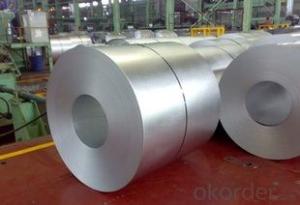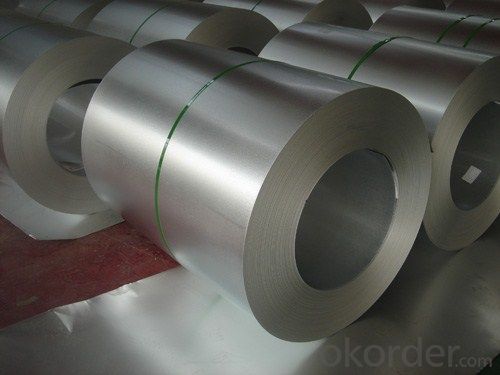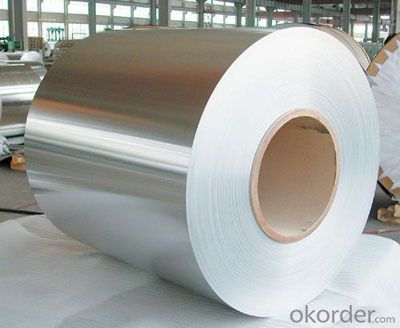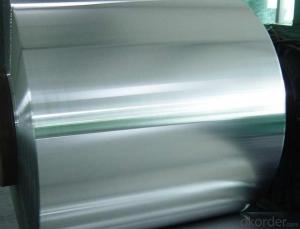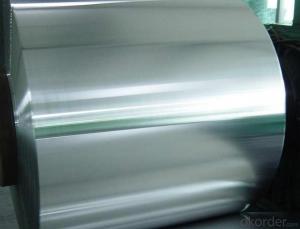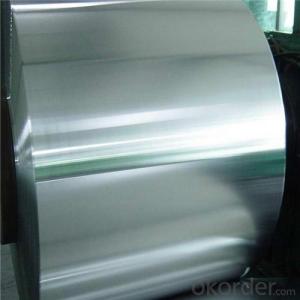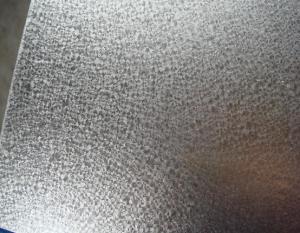HOT-DIP ALUZINC STEEL COIL WITH SUPER HIGH QUALITY
- Loading Port:
- Tianjin
- Payment Terms:
- TT OR LC
- Min Order Qty:
- 25 m.t.
- Supply Capability:
- 5000 m.t./month
OKorder Service Pledge
OKorder Financial Service
You Might Also Like
Quick Details | |||||
Standard: | AISI,ASTM,BS,DIN,GB,JIS | Grade: | SGCC,DX51D/DX52D/S250,280GD | Thickness: | 0.12-4.0 mm |
Place of Origin: | China (Mainland) | Brand Name: | N/M | Model Number: | ssp-226 |
Type: | Steel Coil | Technique: | Cold Rolled | Surface Treatment: | galvanized/ Galvalume/zinc coatting |
Application: | strong anti-corrosion ability,cold bending molded manufacturablity | Special Use: | High-strength Steel Plate | Width: | 600-1250 mm |
Length: | in coil | product: | g40 prime/secordary hot-dip galvanized cold rolled steel coil/sheet | ||
Packaging & Delivery | |||||
Packaging Detail: | standard export package,Other types of packing can be customized as per client's requirement. | ||||
Delivery Detail: | as per client's requirements | ||||
Specifications
1.Mateials:SGCC,DX51D / DX52D / S250,280GD
2.Size:width:600-1250mm(900mm,1215mm,1250mm,1000mm the most common)
thickness:0.15-2.0mm
length:1000-6000mm,as your require
3.Zinc coating :60-180g( as required)
4.Coil id:508mm
5.Coil weight: 3-5MT(as required)
6. Surface:regular/mini/zero spangle, chromated, skin pass, dry etc.
7. Application:
With excellent cold bending molded manufacturablity, good decoration effect, strong anti-corrosion ability, galvanized steel coils and sheets are also pollution-free and easily recycled. Accordingly, they can be used as final products and basic plates of color coated steel coils.
8.Packaging Details:
Standard export package.
Other types of packing can be customized as per client's requirements.
- Q: 420 440 1045 or 1065 ive bought knifes with these steel grades and i want to know which one is better.
- SAE 440 is the best. Classified as high grade cutlery steel. There are various grades of 440: A, B, C, and F. 440 A is the most stain resistant while 440 C has the most carbon and can achieve the highest hardness (Best edge Retention). SAE 440 Chemistry: 16 - 18% Chromium, 0.60 - 1.2% Carbon, 0.75% Molybdenum. SAE 420 is pretty good. Classified as cutlery steel, it is a stain resistant grade but has less chromium and significantly less carbon than SAE 440. SAE 420 Chemistry: 12 - 14% Chromium, 0.15% Carbon (min), 0 Molybdenum Chromium is what makes the steel corrosion resistant. It also adds toughness. Molybdenum adds extra corrosion resistance and adds hardenability. So you can see by chemical components that 440 is highest quality although that also means more cost. 1045 and 1065 are low quality steels and you should probably never use them for a knife. The 1 indicates plain carbon steel with little other alloying elements. The last two digits indicate how much carbon is in the steel. 1045 has 0.45% carbon, mid-range hardenability. 1065 has 0.65% carbon, high hardenability. So if I had to choose I would choose 1065 over 1045 but the difference isn't that noticeable. Everything I said here assumes they have all had the optimum Quench and Temper heat-treatment for their chemistry grade.
- Q: What are the common sizes of steel coils used in the industry?
- The common sizes of steel coils used in the industry vary, but some of the standard sizes include 0.4mm, 0.5mm, 0.6mm, 0.7mm, 0.8mm, 1.0mm, 1.2mm, 1.5mm, 2.0mm, and 2.5mm. However, it's important to note that different industries may have specific requirements and may use custom sizes depending on their applications.
- Q: How are steel coils used in the manufacturing of industrial machinery?
- Steel coils are used in the manufacturing of industrial machinery as they serve as the primary raw material for various components such as frames, casings, gears, and structural supports. These coils are typically cut, shaped, and welded to create the desired machine parts, ensuring strength, durability, and precision in the final product.
- Q: What are the different types of steel coil leveling methods?
- There are primarily two types of steel coil leveling methods: roller leveling and stretcher leveling. Roller leveling involves passing the coil through a series of rollers to remove any unevenness, resulting in a flat and level surface. Stretcher leveling, on the other hand, stretches the steel coil to remove any internal stresses and achieve a flat and level surface. Both methods are commonly used in the steel industry to produce high-quality and dimensionally accurate steel coils.
- Q: How are steel coils processed for different levels of hardness?
- Steel coils can be processed to achieve different levels of hardness through a variety of methods. One common method is heat treatment, which involves heating the coils to a specific temperature and then rapidly cooling them to alter their microstructure and achieve the desired hardness. The process of heat treatment can include quenching, tempering, or annealing, depending on the desired hardness level. Quenching involves cooling the coils rapidly in a liquid medium such as water or oil to achieve a high hardness level. Tempering, on the other hand, involves reheating the coils to a lower temperature and then slowly cooling them to achieve a desired balance of hardness and toughness. Annealing is a process that involves heating the coils to a specific temperature and then slowly cooling them to relieve internal stresses and achieve a softer and more ductile material. Additionally, mechanical processes such as cold rolling or cold working can also be used to increase the hardness of steel coils. These processes involve subjecting the coils to compressive forces, which cause the material to deform and result in an increase in hardness. Overall, the processing of steel coils for different levels of hardness requires careful control of temperature, cooling rate, and mechanical forces to achieve the desired properties for specific applications.
- Q: I want to buy a VERY sturdy bunkbed, but don't know which one would be better with not getting loose or falling apart.
- Metal, the screws can loosen, but most of the joints in a metal bed are welded, and screws that work loose are easy to tighten, once a screw or glued joint comes loose in a wood bed it will never be the same. The metal bunkbed my daughter had only needed screws to keep the upper safety rail from wobbling, but without any screws it would still stay together.
- Q: If you were selecting a tool steel for an extreme impact load application, which one would you pick? why?thanks
- It all depends what the application actually is. For hammers I would select a hammer grade B1 steel. For impact loading where an edge is needed I would be going for O1 or similar (oil quenching steels tend to be a little tougher than air hardening). For mining tools a very high manganese steel (Hadfields steel) - this is not a true tool steel. The best place to start is by looking at the ranking of the properties which you want - hardness v toughness v strength - and then use this to put the steels in rank order. Price and availablity then sort the problem out for you (in the real world).
- Q: How are steel coils used in the marine industry?
- Steel coils are commonly used in the marine industry for various purposes such as shipbuilding, offshore structures, and maritime equipment. These coils are utilized in the construction of ship hulls, decks, and bulkheads due to their high strength and durability. Additionally, they are often used in the fabrication of marine equipment such as cranes, winches, and anchor systems. Steel coils are crucial in ensuring the structural integrity and longevity of marine vessels and components, making them an essential material in the marine industry.
- Q: like the steel industry and the effects it had on industrial growth, 10 points!
- The single most important important advance in steel production was learning to accurately control carbon content. This was done through the Bessemer Process in which air was blown through molten iron to burn out impurities and excess carbon. Low carbon iron (wrought iron) could be easily worked into shapes. Medium carbon iron could be cast into useful and durable shapes. High carbon steel could be used for structural uses (beams and girders). Adding alloys such as nickel and silicon could produce very tough steels and steels resistant to rust. Adding vanadium to steel engine parts allowed Ford to produce finely machined engines in huge numbers with existing machinery.
- Q: Can steel coils be used in marine environments?
- Yes, steel coils can be used in marine environments, but proper precautions need to be taken to prevent corrosion. Steel is prone to corrosion when exposed to moisture and saltwater, which are common in marine environments. To counteract this, the steel coils can be treated with protective coatings, such as galvanization or painting, to create a barrier between the steel and the corrosive elements. Additionally, regular maintenance and inspections should be performed to identify any signs of corrosion and take appropriate action to prevent further damage. By implementing these measures, steel coils can be effectively used in marine environments while minimizing the risk of corrosion and ensuring their durability and performance.
Send your message to us
HOT-DIP ALUZINC STEEL COIL WITH SUPER HIGH QUALITY
- Loading Port:
- Tianjin
- Payment Terms:
- TT OR LC
- Min Order Qty:
- 25 m.t.
- Supply Capability:
- 5000 m.t./month
OKorder Service Pledge
OKorder Financial Service
Similar products
Hot products
Hot Searches
Related keywords
